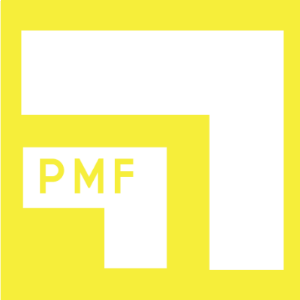The Secret to Strength and Lean Muscle Gains
As with anything else in life, you cannot progress without a tangible aspect to measure. If you are building your finances, you will need to find ways to progressively acquire more money. If you are trying to lose weight, you need to track your calorie intake to lose fat. If you are training to gain muscle, you will need to get stronger on your lifts each workout. Tracking your progress in all of these areas is what will lead to your success.
I've witnessed people in the gym who do the same exact workouts day in and day out, and they wonder why they don't get results. The answer is almost always that they are not progressing on any of their lifts, or exercise activities.
Progressive overload is the gradual increase of stress placed upon the body during exercise training. This is how you build strength and lean muscle. Seems pretty simple and obvious, yet most people in the gym are still not following this protocol.
“Without PROGRESSIVE OVERLOAD your body does not need to adapt and therefore will never get bigger or stronger beyond a certain point.” – www.bodybuilding.com
BASICS OF PROGRESSIVE OVERLOAD
1) Start with perfect form. Then, each week add weight to the bar, or add reps. Train JUST below failure. Once you get to your desired rep range, then you should add weight to the bar. –
If your form is suffering, you will eventually get to a point where your body will not let you progress. Then, you will have to decrease weight, and start a couple steps backwards. This is okay, and is a good learning experience. But if you take some more time in the beginning stages to implicate proper form with lower weights, you will save yourself a lot of wasted time.
2) Micro-loading
This is a very effective method of achieving progressive overload. A great way to do this is to add fractional plates (1.25 lb or 2.5 lb plates each week depending on the exercise). Because it is difficult to increase the load by 5 lbs every week, you will eventually need to use smaller increments. You may need to get craftier to micro-load on dumbbells, but where there's a will - there's a way.
Some exercises such as incline chest press (which involves the clavicular portion of the pectoralis major - a stubborn muscle to develop) will be better suited for (2) 1.25 plate increases. Weighted dips/pull-ups or dead-lifts will be more receptive to the 2.5 plate increases (especially as a beginner) as the back and leg muscles tend to grow quicker than chest. Simply put, this is mostly because pushing movements like chest press are unique to our daily lives, whereas our legs and back are used more often on a daily basis, such as bending over to pick up a pencil, walking, carrying groceries, etc....
3) Track your workouts
This can be done with a notepad, app, or your smartphone notepad. Visually seeing the progress is psychologically important, as well as knowing your starting point for each successive workout. You don’t want to be wasting time in the gym futzing around on the same weight all year long. You must track your lifts!
4) Add weight, get stronger.
"The body runs on three energy systems; phospagen, glycotic, and oxidative/aerobic. The energy system in use is primarily determined by the intensity of the exercise, and secondly by the exercise duration" - NSCA's Performance Training Journal
When you are strength training, adding weight to the bar is generally more effective than adding repetitions. There is a sweet spot where you should be getting in sufficient repetitions to drive neuro-muscular adaptations, but there comes a point where adding more and more reps is going to lead to bad form, and possibly injury. Plus adding more volume will end up making your workouts longer and longer. This time way more time than just focusing on simple strength adaptations.
5) Be patient and practical with your training
It is impossible to progress on every lift indefinitely each week, especially after the "newbie" phase. Even a marginal increase each week of 2.5lbs on certain lifts would be a 130lb increase over the course of the year. That is just not realistic to achieve across the board. You will get to a point where you will need to stay on a certain weight until you get to a certain rep range. This may be over the course of a few weeks, and as frustrating as that sounds, it is the reality.
Eventually, you will need to jump into a different phase of training by changing up the rep scheme (i.e. switching to hypertrophy based training), changing your exercises/routines, just removing certain exercises that are causing you to stall on some of your compound lifts, or just focusing on form.
If you are cutting weight, it will be extremely difficult to progress on all of your lifts in a calorie deficit, or even at maintenance level calories. Eventually you will need more food, so progress will depend on what stage of the game you are at currently. If you are in a calorie deficit, then certain body-weight exercises like weighted dips/chin-ups will see nice gains with the plates each week, whereas exercises like dead-lifts and incline presses will stall. That being said, if you are lifting the same amount of weight and losing fat in the process, your relative strength to your body weight is increasing.
As long as you are progressing in some way, you are on the right track.

